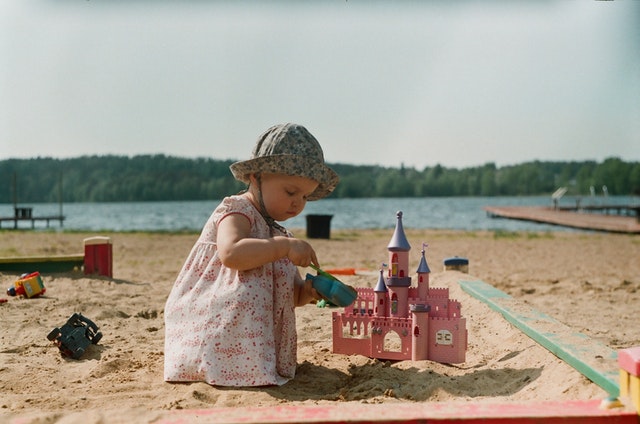Master sandcastle builders compete worldwide, but you don’t have to be a master sandcastle builder to create your sand masterpiece.
Playing in the sand is one of the joys of being at the beach, sinking your toes and fingers into the white sands, building mounds, surrounding them with water-filled trenches, and decorating them with shells and seaweed. It’s an activity for all age groups, and taking a few simple tips from the masters makes it even more fun. I recently attended the Sandbach Sand Castle competition at Fort Myers Beach, where I picked up a few tips from Bill Knight and Andy Hancock of Sandlubber’s “Sandvertising” Agency on building a better sandcastle.
Sandcastle Building Basics
Even the experts build with simple sand and water. While Elmer’s Glue is sometimes introduced into the competitions, this is simply a way to preserve the detail work and has no bearing on the structural integrity of a sand sculpture. Simple sand and water are all we need. At the beach, Bill and Andy recommend using 5-gallon buckets to move your sand to the desired location and first constructing a platform on which to build your masterpiece. You will significantly elevate your finished product, drawing more attention to it and protecting it from foot-level damage.
In viewing the masters’ sculptures, it is easy to see that they all build in a pyramid shape with a broader base and narrowing as it gets taller. Andy Hancock explains this is simply a matter of physics. The foundation needs to be wider and more vital to support the height. Pack the sand carefully to avoid air pockets, as these may cause your structure to collapse. Use plenty of water when hand-stacking the sand and allow it to dry adequately before continuing to build height.
Household Items for Building Sand Sculptures
Any expert will tell you how important it is to use the appropriate tools for the job. Building sand sculptures is no different. In addition to the 5-gallon jug, Bill and Andy sport tool belts with simple household items for sand sculpting. Jokingly telling the crowd that he stole his wife’s cake knife for Sandbach, Bill recommended it for slicing and carving sand. It is particularly effective for creating staircases. He used flat discs intended to move furniture to smooth large areas of sand and make-up brushes to sweep away debris. Andy used a drinking straw to blow loose sand and draw details in the sand. Both stressed that each sculptor finds his grouping of best-loved tools. Andy, however, sells a specialized sand-castle-building toolkit with lessons on South Padre Island.
Once you have put together the appropriate tools and created a platform to build, the possibilities are endless. Forget the plastic molds and hand-stack wet sand, building a large enough mound to carve into whatever you imagine. Use your toolkit to cut away a design once the stack is solid and dry enough. Slow down and cut bit by little. It’s easier to take a little more sand off than add more back on. Dare to test the limits, though. After all, it’s only sand, and this is supposed to be fun!




